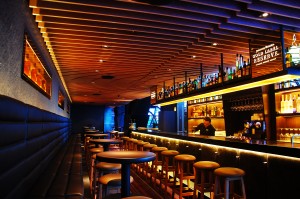Lookbox Living: Green Light
Wednesday November 14th, 2012 In the News
“LED lasts up to 5 times longer than standard incandescent lighting. In addition, with a high colour rendering index, LED lights produce better quality lighting.”

Cove Lighting by IEQ Global
Light Emitting Diode, or more commonly known as LED, is touted as the Mr Fix It of the lighting industry. They do dozens of different jobs and are found in all kinds of devices that are essential for modern everyday life. For instance, they form numbers on digital clocks, light up watches and of course, provide lighting in offices, commercial buildings and homes.
Despite its prevalence, LED lights are still environmentally friendly, making them a good option in and around the house.
What is the difference between conventional bulbs and LEDs?
Generally, conventional lights rely on the use of a thin wire known as a filament to ignite the bulb. Mr Ong Wei Ping, Executive Director of IEQ Global, a premier green lighting solutions provider of over 50 years, explains that electricity is passed through the filament to heat it up and generate light. Fluorescent tubes and compact fluorescent bulbs emerged to replace conventional light bulbs. These have electrodes that are powered by relatively lower but still high electrical currents to light up mercury vapour within a tube or a bulb.
LEDs don’t use tungsten filaments—it is the direct point where the amount of electrical current supplied directly results in a corresponding amount of light. Thus, there is extremely little wastage of electricity and a reduced carbon footprint.
How else is LED greener and safer?
LED lighting has an extremely long lifespan—hence, fewer pieces need to be manufactured, leading to less energy expansion. “LED lasts up to 5 times longer than standard incandescent lighting. In addition, with a high colour rendering index, LED lights produce better quality lighting,” Mr Ong says. Lastly, conventional lights emit UV rays—over-exposure can lead to skin damage—when in operation. LED does not emit any UV rays.